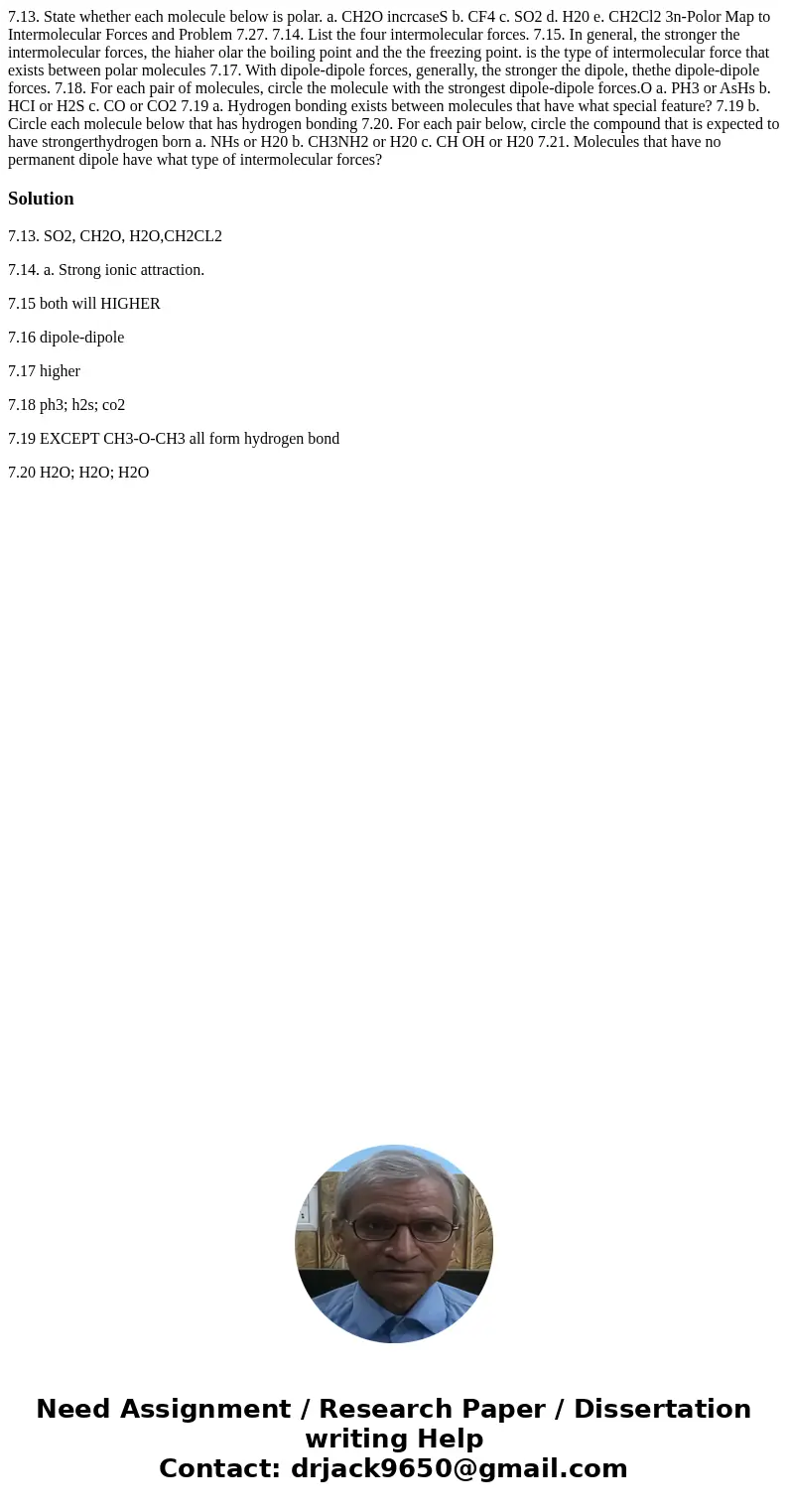713 State whether each molecule below is polar a CH2O incrca
7.13. State whether each molecule below is polar. a. CH2O incrcaseS b. CF4 c. SO2 d. H20 e. CH2Cl2 3n-Polor Map to Intermolecular Forces and Problem 7.27. 7.14. List the four intermolecular forces. 7.15. In general, the stronger the intermolecular forces, the hiaher olar the boiling point and the the freezing point. is the type of intermolecular force that exists between polar molecules 7.17. With dipole-dipole forces, generally, the stronger the dipole, thethe dipole-dipole forces. 7.18. For each pair of molecules, circle the molecule with the strongest dipole-dipole forces.O a. PH3 or AsHs b. HCI or H2S c. CO or CO2 7.19 a. Hydrogen bonding exists between molecules that have what special feature? 7.19 b. Circle each molecule below that has hydrogen bonding 7.20. For each pair below, circle the compound that is expected to have strongerthydrogen born a. NHs or H20 b. CH3NH2 or H20 c. CH OH or H20 7.21. Molecules that have no permanent dipole have what type of intermolecular forces? 
Solution
7.13. SO2, CH2O, H2O,CH2CL2
7.14. a. Strong ionic attraction.
7.15 both will HIGHER
7.16 dipole-dipole
7.17 higher
7.18 ph3; h2s; co2
7.19 EXCEPT CH3-O-CH3 all form hydrogen bond
7.20 H2O; H2O; H2O

 Homework Sourse
Homework Sourse